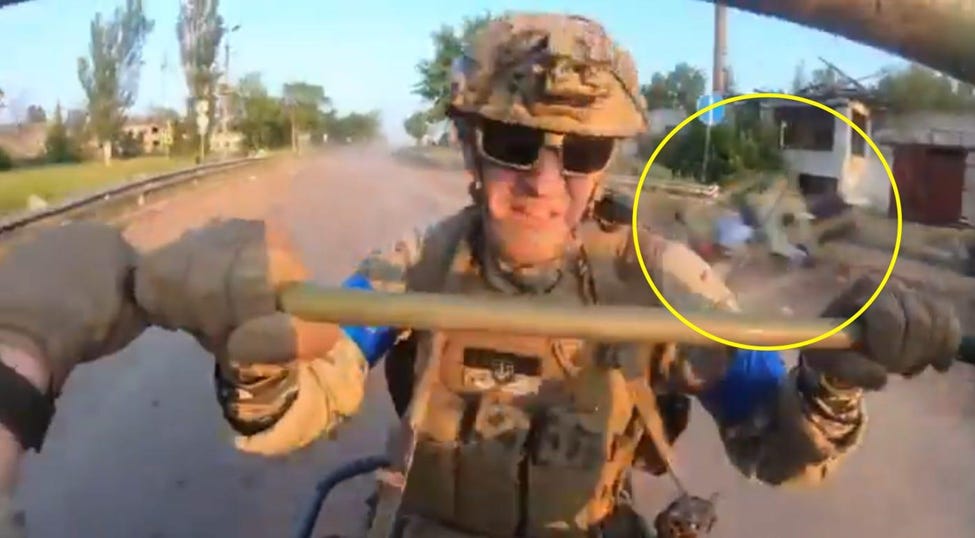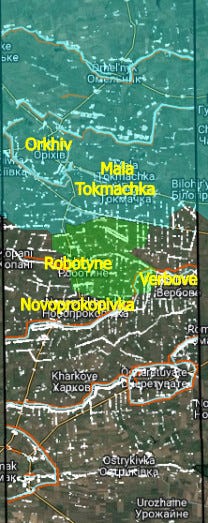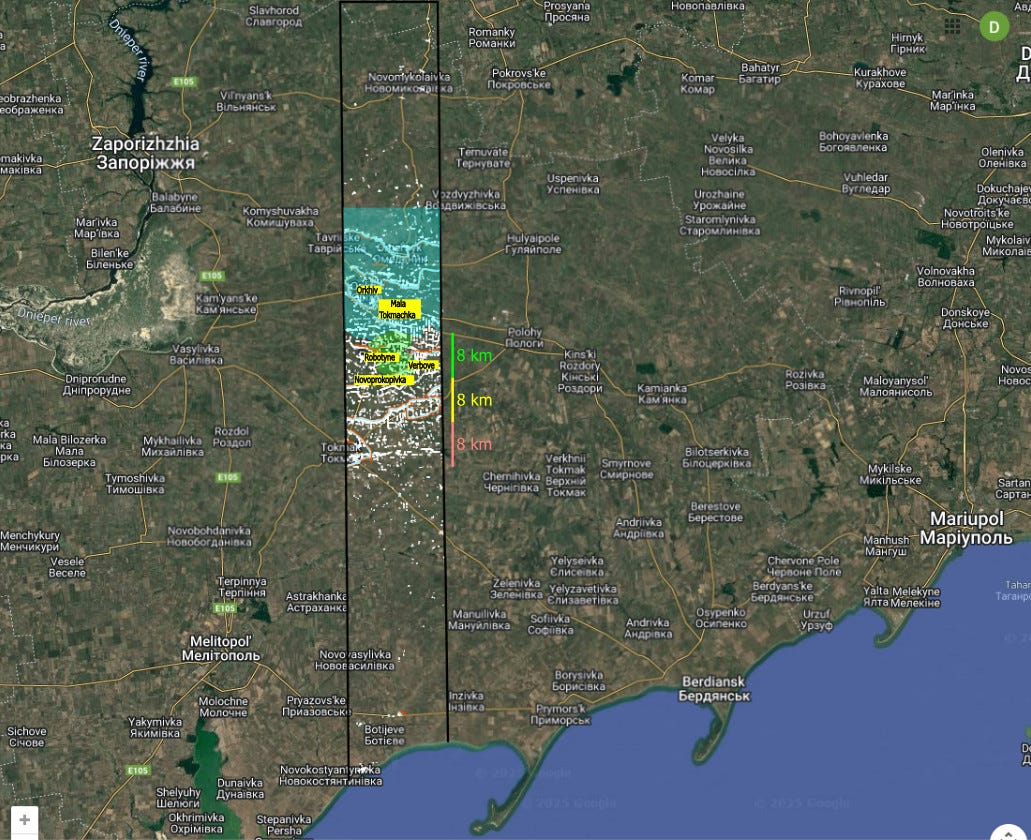(…continued from Part 1…)
***
Komar
The establishment and organisation of the XX Corps ZSU, and the composition of its primary elements, have been identified. Four of the units were in the Komar sector and the 17th Brigade was moved from Pokrovsk.
Recently, there have been several deep and narrow penetrations around Komar which indicate an unstable front. The specific reasons for the repeated instability are unknown. Maybe several smaller units across the front briefly collapsed. Maybe there were gaps between adjacent units due to poor coordination and Russia moved into these gaps. Maybe there were a lot of units being shuffled around to create a corps and this movement and reorganization created the instability. There isn’t enough information to confidently determine the cause.
The 33rd, 23rd, 141st and 31st have been in their same relative positions for several months now, but there have been a dozen other brigades, regiments and battalions moving in and out of the front between the village of Zaporizhzhia and Shevchenko in that same amount of time. That’s a lot of movement and that creates a lot of instability. Untangling the units after three years of patchwork defenses was never going to be easy. Maybe this instability is the unavoidable cost of creating a more effective organizational structure that will increase the strength and capability of the Ukrainian army. Time will tell.
On the way to the village of Zaporizhzhia, the Russians heavily bombarded Ukrainian positions, more than what is seen in the video, and Ukraine abandoned two MRAPs.
***
Zaporizhzhia
Russian cluster munitions bombard Mala Tokmachka. Treelines outside of Myrne were shelled. Russia was unable to advance in this sector.
In June 2023, the only rail line to connect Donetsk with Crimea over land was only five km behind the front lines. It could not be used because it was within distance of Ukrainian artillery fire so that month they began to build an 80 km rail line that would bypass the interdicted line that was so close to the front. It was completed in May 2024 and was initially 50 km from the front line.
In July 2023 Russia began to line the interdicted line with railway cars to form a barrier against any Ukrainian advance in this sector. When they stopped in February 2024 they had used 2,000 railway cars to create a 30 km barrier.
Russia also built another rail line along the coast of the Azov Sea. It’s 80-100 km from the front lines, making it impossible to interdict with conventional artillery and harder to interdict with drones and missiles.
On 14 December 2024, Ukrainian Special Operations Forces sabotaged the tracks 40 km south of the front lines. When the train came to a halt, drones and missiles from HIMARS attacked it. 40 fuel tankers and a locomotive were destroyed. On 24 May, a Russian train was hit by drones 50 km south of the front lines. At least three fuel tankers were destroyed. On 21 June, another train carrying oil was hit 35 km from the front lines and at least 11 fuel tankers were burning. The Russian army has 25,000 soldiers dedicated to building and repairing damaged tracks so clearing the damaged cars and repairing the tracks could be completed in a few days. But as drone operations continue to improve it is likely these attacks will continue to increase.
Some of the factors to consider in the operation is that the Russian trains move about 40 kph, there are few routes for the train to take and it could have been under observation for hours, by aerial units and/or personnel on the ground. Rotor aircraft have limited battery life and bigger drones could carry smaller drones to extend the range of the smaller drones. It is important to time the arrival of the train with the arrival of the drones because of the limited battery life of drones and the 15-30 minutes it might take for the drones to travel. Russian electronic warfare assets have to be considered in planning, as well.
A lot has changed since 2023 and it will continue to change. It is about 100 km from the front lines to the Sea of Azov. If Ukraine can regularly interdict the rail lines in the occupied territories with rotor or winged drones then the importance of the Kerch bridge increases.
***
***
The Russian Ecocide of Ukraine
It’s been two years since Russia destroyed the Kakhovka dam and drained the reservoir. Some of the reservoir land is being reclaimed by plants and animals. Other sections remain open and sandy. Up to 6.9 million hectares of farmland have been abandoned due to lack of water.

***
Playfra geolocated all the trenches, barbed wire, dragon’s teeth and small positions created by Ukraine and Russia in a sector of map centered on Robotyne. Here’s the link for the interactive map. The front lines in front of Orkhiv never changed by more than 7 km and were stable by August 2022. The Ukrainian offensive started in June 2023 and lasted until October 2023.
On the map below, Ukraine occupied the blue at the beginning of the offensive. After heavy casualties on both sides, Ukraine advanced on an 11 km front no more than 8 km.
For a wider perspective, 8 km was about one third of the depth of prepared Russian defenses. Ukraine was able to partially penetrate the first Surovikin line west of Verbove. Being further away, the second line is more complete and better constructed. In between was an intermediate line and hundreds of smaller positions in treelines/hedgerows designed to delay and attrit Ukrainian forces.
More than any other obstacle, the minefields in front of these positions were the most deadly for Ukrainian forces. But an obstacle that is not covered by enemy fire is not an obstacle. Trenches kept the Russians alive for a little while longer, allowing them to cover the mines with fire. Ukrainian sappers would have to remove the mines in the open fields, at night, and under fire from small arms and artillery. The casualty rate among Ukrainian infantry, especially sappers, was high.
More important than the Ukrainian casualty rate, it slowed the Ukrainian advance. This meant that when the Russian infantry in the defensive lines were eliminated, reserves could be rushed up to take their place before Ukraine could exploit the breach in the defenses they created. Even with all the command issues in the Ukrainian army, if the Russians did not have these extensive defenses with massive minefields, there was a high chance Ukraine could have broken through.
***
Kherson
A Russian column was hit by at least one mine dropped by a drone. Details about the rest of the damage is unknown.
With the lights on at night, you might presume the Russians were on a safe part of the Dnieper river but that doesn’t explain the rifle fire halfway through the video. It is not surprising that inexperienced personnel don’t know how to handle small craft with engines. It is surprising that the results would be posted.
***
Occupied Territories
A Ukrainian collaborator became the acting mayor of Berdyansk. In that capacity, he arrested and tortured pro-Ukrainian citizens. He was shot last week.
***

Making a Russian van drone proof
***
(…to be continued…)











"A Ukrainian collaborator became the acting mayor of Berdyansk. In that capacity, he arrested and tortured pro-Ukrainian citizens. He was shot last week."
Another posting of "proven UA source" even without try to analyze.
Mayor of a city is absolutely civilian position in Russia. At best, a mayor can participate in civil defense activities. Arresting and interrogation of the prisoners are all in law enforcement agencies hands (FSB, MVD, and etc).
So, the only fault of assasinated guy was that he'd been pro-Russian.